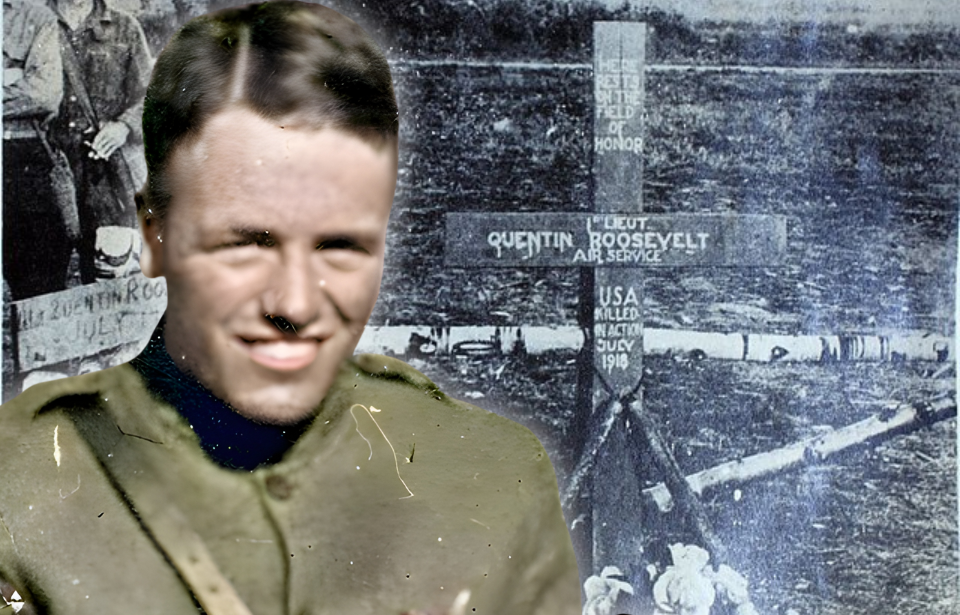Many U.S. presidents have a background in the military, with 31 having served in the armed forces before assuming office. Often, their children pursue similar paths. Sadly, one met a tragic end in battle: Quentin Roosevelt. As the youngest member of the Roosevelt family, he was a pilot in World War I and perished in aerial combat over France on Bastille Day.
Theodore Roosevelt got his start in politics
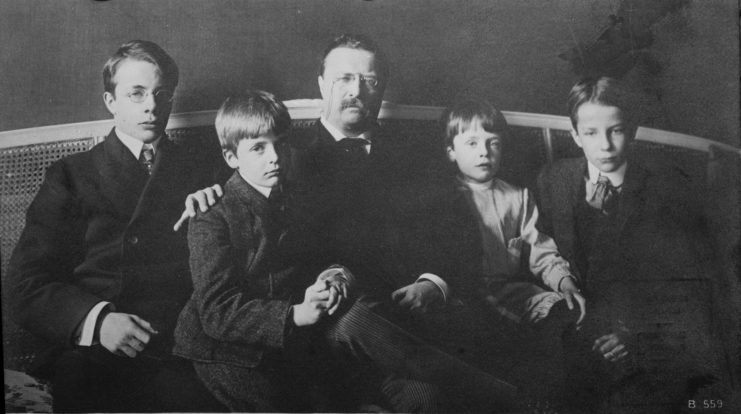
Theodore “Teddy” Roosevelt set a lofty standard for his descendants. Despite grappling with severe asthma during his formative years, the 26th president of the United States perceived his condition as an obstacle to be conquered through sheer willpower and physical effort. Despite his physical fragility, he thrived as a boxer during his time at Harvard University.
After a brief foray into politics as a state assemblyman, Roosevelt became drawn by the rugged lifestyle of a rancher, prompting his move to the Dakota Territory to engage in cattle work in the 1880s. Nevertheless, his ardor for politics endured, leading him back to the realm of public service. He served initially with the United States Civil Service Commission, later assuming roles such as New York City Police Commissioner and Assistant Secretary of the US Navy.
Theodore Roosevelt’s ‘Rough Riders’
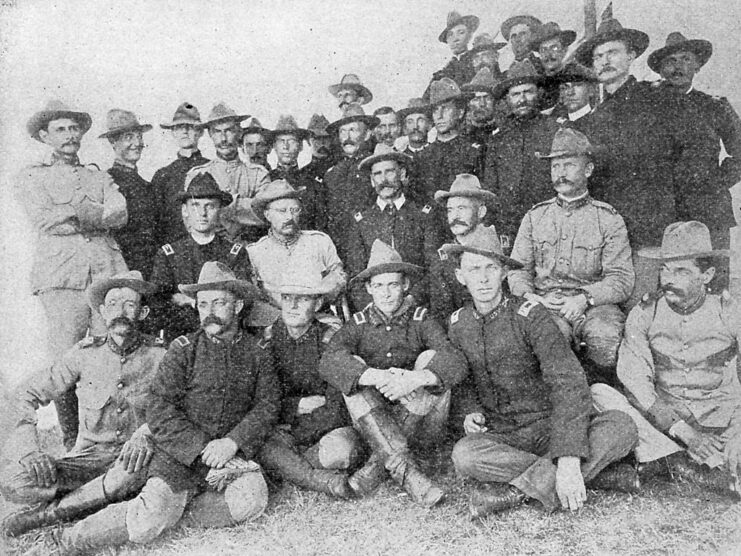
Following the outbreak of the Spanish-American War, Theodore Roosevelt, eager to prove himself, resigned from his position with the US Navy and, alongside US Army Col. Leonard Wood, formed the 1st US Volunteer Cavalry Regiment. Known as the Rough Riders, they fought in Cuba, with their first engagement occurring on June 24, 1898, with the Battle of Las Guasimas. The victory was swift, with American forces and Cuban rebels driving out the Spanish troops from the area.
This, combined with the triumph at the Battle of San Juan Hill, which Roosevelt called “the greatest day of my life,” solidified his reputation as a heroic figure in the eyes of the American public. He became the governor of New York for two years, before becoming the vice president of the United States under William McKinley.
Shortly into his presidential term, McKinley was assassinated, leaving Roosevelt to lead the country. He served two terms and remained active in politics long after leaving office.
Quentin Roosevelt’s early life
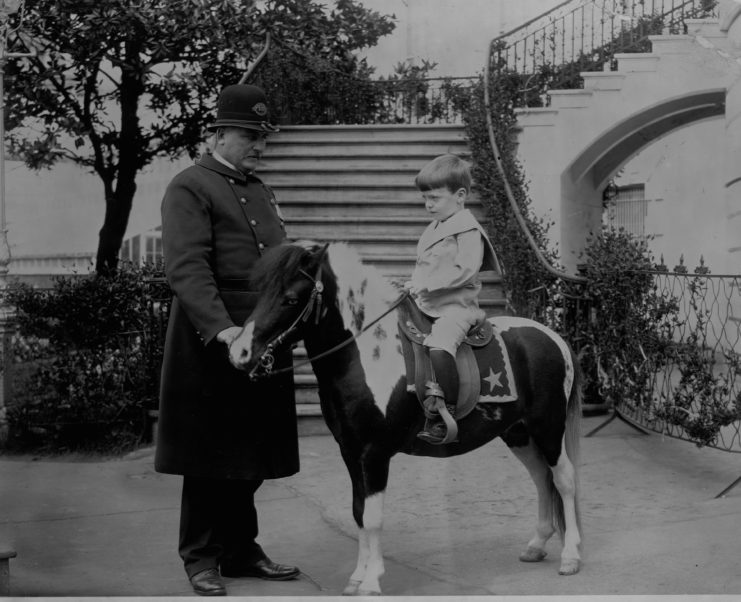
Quentin Roosevelt was the youngest of Theodore and Edith Roosevelt’s children. His siblings included half-sisters, Alice and Ethel, and brothers, Theodore III (“Ted”), Kermit and Archibald (“Archie”).
When his father assumed the presidency in 1901, Quentin was just three years old. Much like his father, he possessed a spirited nature and gained a reputation as a mischief-maker. Alongside his friends, he engaged in antics such as defacing pictures in the White House, carving a baseball diamond into the lawn and playfully throwing snowballs at Secret Service agents.
Despite his spirited demeanor, Roosevelt excelled academically. He attended Episcopal High School in Alexandria, Virginia, before continuing his education at Groton School in Massachusetts. Later, like his father, he enrolled at Harvard University, where he was known for his writing prowess. In 1919, the university awarded him a posthumous degree.
Entering service with the US military
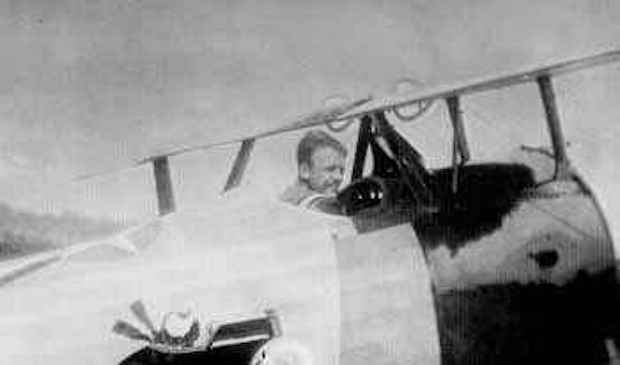
The Roosevelt brothers were deeply instilled with a sense of duty to their country, a value inherited from their father, who provided them with military training. In 1915, Quentin attended a camp led by Maj. Gen. Leonard Wood. When World War I broke out, all four siblings enlisted in the US military as commissioned officers.
Quentin served in the 1st Reserve Aero Squadron, undergoing training in Long Island before being deployed to France as a lieutenant. There, he assisted in setting up a training base at Issoudun and later became a supply officer, ultimately overseeing operations at an American training base in Europe.
He earned his pilot wings soon after with the 95th Aero Squadron, 1st Pursuit Group.
Quentin Roosevelt showed skill as a pilot
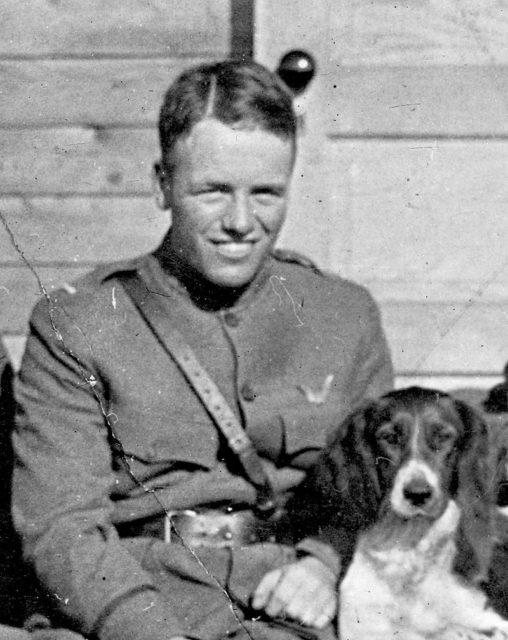
Once in the air, Quentin Roosevelt showed his prowess as a combat pilot, securing his first confirmed kill on July 10, 1918, during the German Spring Offensive. While skilled, he still hadn’t quite shaken the recklessness from his childhood, with fellow pilot and Medal of Honor recipient Capt. Eddie Rickenbacker once commenting:
“He was reckless to such a degree that his commanding officers had to caution him repeatedly about the senselessness of his lack of caution. His bravery was so notorious that we all knew he would either achieve some great spectacular success or be killed in the attempt. Even the pilots in his own flight would beg him to conserve himself and wait for a fair opportunity for a victory. But Quentin would merely laugh away all serious advice.”
Roosevelt was killed in combat
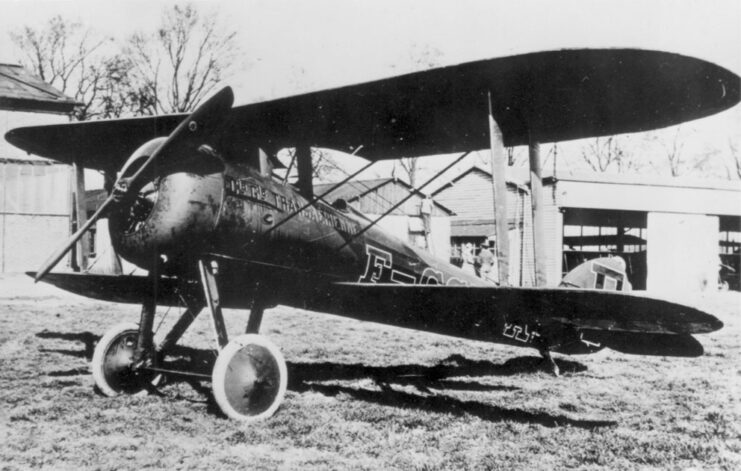
A few days after downing his first enemy aircraft, Roosevelt himself was taken out by the Germans over Chamery. He was hit by two machine gun bullets, which pierced his head, killing him. The Nieuport 28 C.1 he was piloting crashed and was recovered by the Germans.
It hasn’t been confirmed who, exactly, was responsible for taking out Theodore Roosevelt’s son. Three German pilots have been given credit throughout history, but none of them have been concretely determined to have been the person. They are: Sgt. Carl Graeper, Lt. Karl Thom and Lt. Christian Donhauser.
Paying respect to Quentin Roosevelt
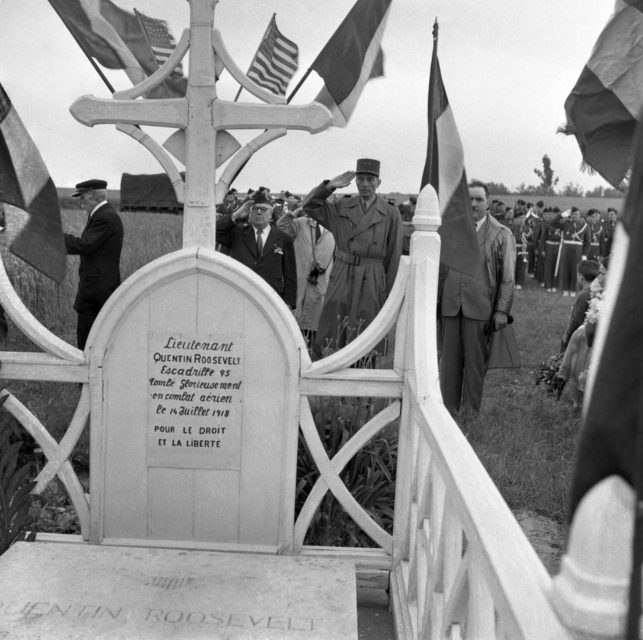
Quentin Roosevelt was buried with full military honors by the Germans, his grave marked by a cross crafted from two pieces of wood and wire salvaged from his aircraft. After the Allied forces reclaimed the territory, his grave became a pilgrimage sit for thousands of soldiers who were inspired by his bravery. In 1955, his remains were exhumed and reinterred at the World War II American Cemetery in Colleville-sur-Mer.
Theodore Roosevelt was deeply affected by the loss of his youngest son. In a letter to one of Quentin’s friends, he wrote, “To feel that one has inspired a boy to conduct that has resulted in his death, has a pretty serious side for a father, and at the same time I would not have cared for my boys and they would not have cared for me if our relations had not been just along that line.”
More from us: The Magic Engineering Behind Why Early Fighters Didn’t Shoot Their Own Propellers
The mourning Roosevelt patriarch didn’t outlive his son for long. On January 6, 1919, he died when a blood clot detached from a vein and traveled to his lung. He was 60 years old.
